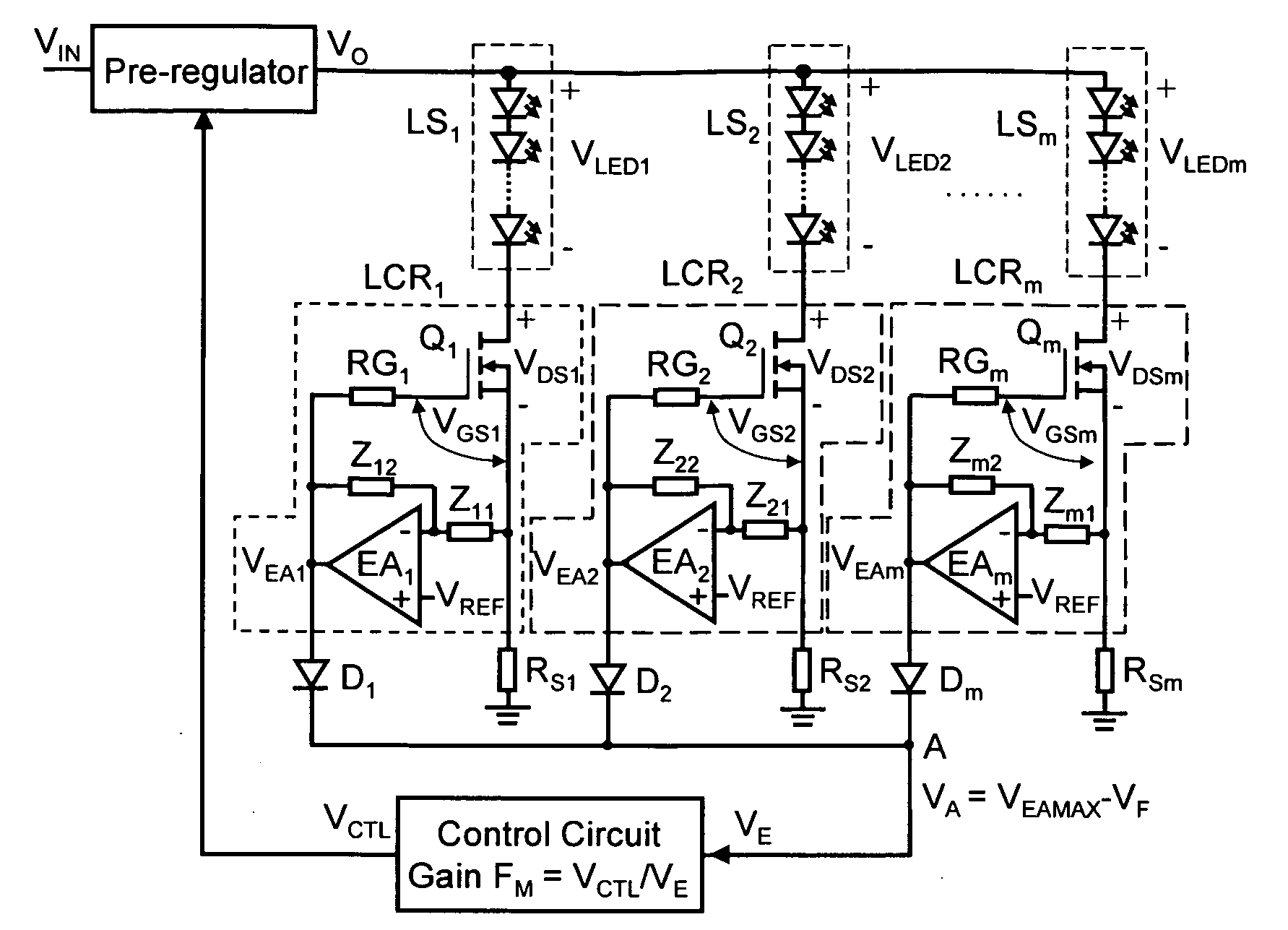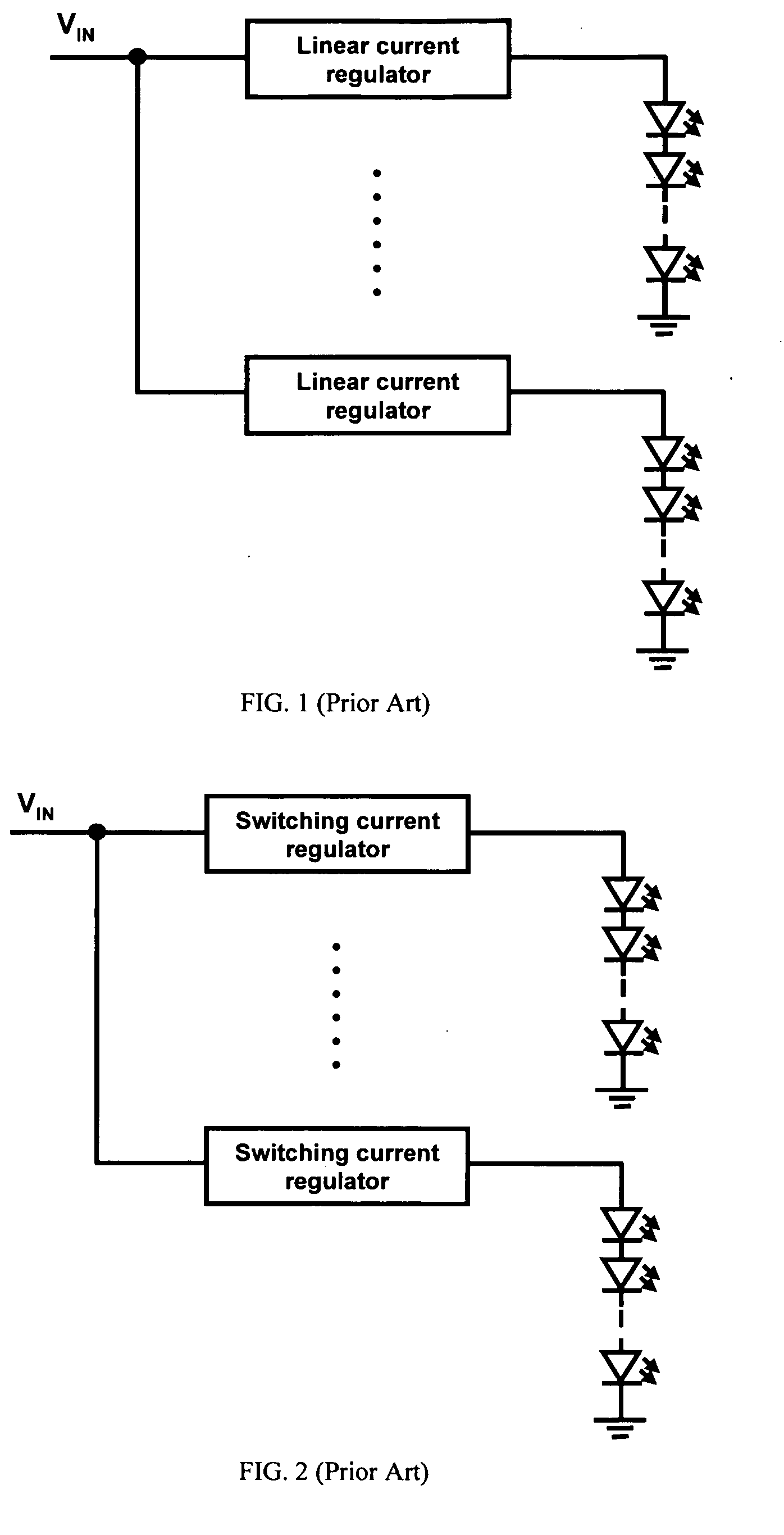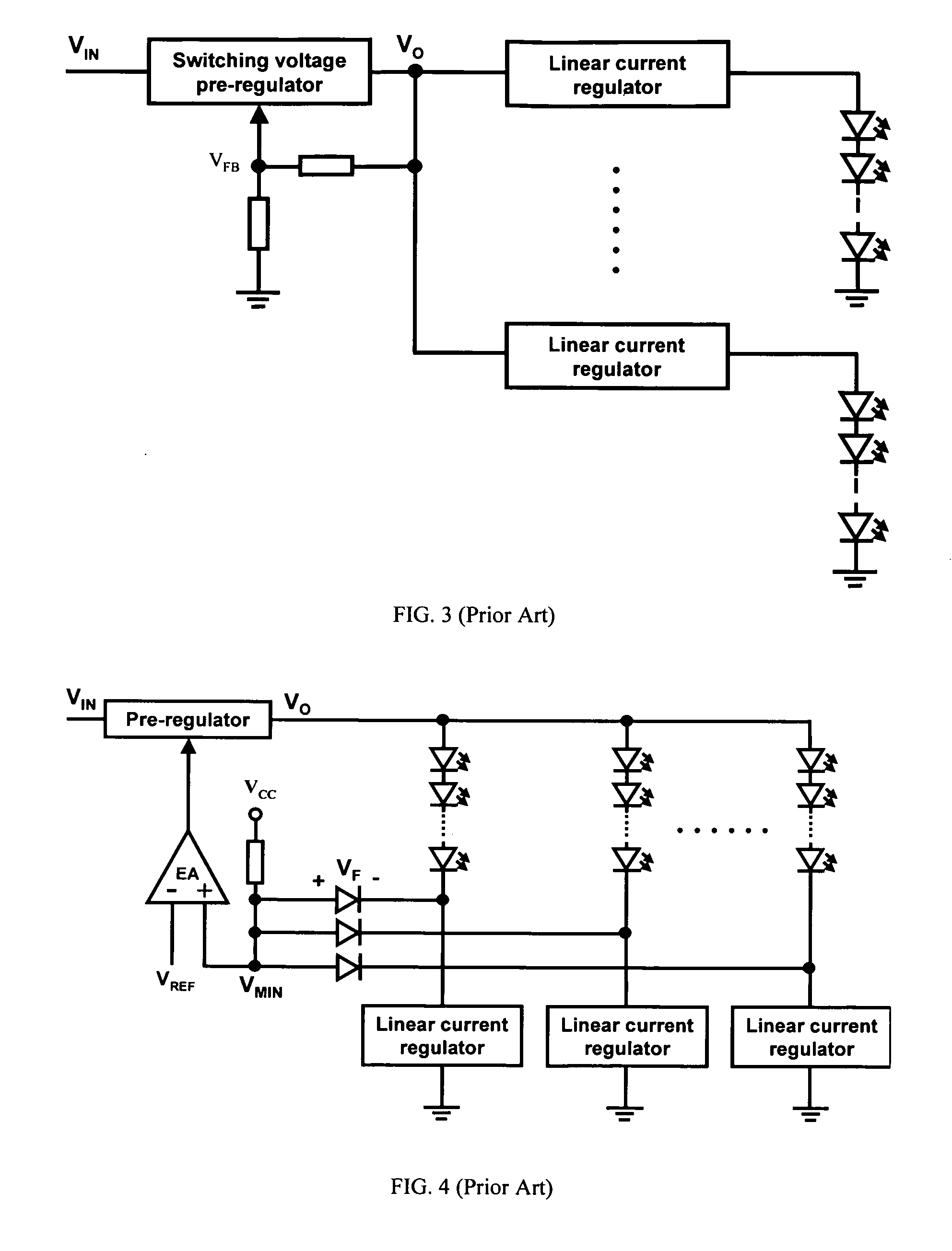Driver that efficiently regulates current in a plurality of LED strings
a technology of led string and driver, which is applied in the direction of lighting apparatus, instruments, light sources, etc., can solve the problems of poor efficiency of circuit fig. 1, simple paralleling of leds or led strings is not desirable, and the output voltage of power supply is reduced, so as to achieve the effect of optimum operating efficiency, improving the performance of the driver, and reducing the output voltage of the power supply
- Summary
- Abstract
- Description
- Claims
- Application Information
AI Technical Summary
Benefits of technology
Problems solved by technology
Method used
Image
Examples
Embodiment Construction
[0040]An LED driver circuit according to the present invention uses a power supply having an adjustable output voltage, such as a switching pre-regulator, coupled to a plurality of parallel LED strings, or other kind of loads, comprising one or more LEDs to generate corresponding plurality of current flows in each LED string. Each LED string has a cumulative forward voltage that is the sum of the forward voltage of the one or more LEDs. Thus, each load is associated with a corresponding voltage drop. In one embodiment, each LED string comprises a sequence of a plurality of serially coupled LEDs of the same or different colors such that the anode of one LED in the sequence is coupled to the cathode of another LED in the sequence. A plurality of Linear Current Regulators (LCRs), each serially coupled to an LED string, regulate the current flow through each LED string.
[0041]In one embodiment and as further described below, each LCR of an LED string includes a current regulating transis...
PUM
 Login to View More
Login to View More Abstract
Description
Claims
Application Information
 Login to View More
Login to View More - R&D
- Intellectual Property
- Life Sciences
- Materials
- Tech Scout
- Unparalleled Data Quality
- Higher Quality Content
- 60% Fewer Hallucinations
Browse by: Latest US Patents, China's latest patents, Technical Efficacy Thesaurus, Application Domain, Technology Topic, Popular Technical Reports.
© 2025 PatSnap. All rights reserved.Legal|Privacy policy|Modern Slavery Act Transparency Statement|Sitemap|About US| Contact US: help@patsnap.com



